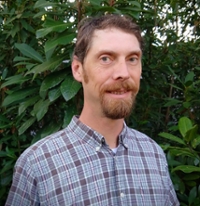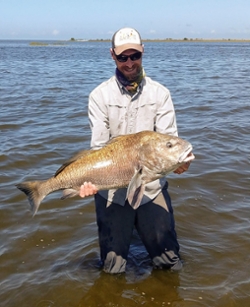Meet Dr. James Skelton

James Skelton just began as Assistant Professor of aquatic ecology this fall semester, 2020. Dr. Skelton notes his research subjects often involve the quirky organisms people usually don’t notice or even realize exist—like freshwater sponges, yet these little known creatures are often a huge component of freshwater ecosystems. It was the freshwater sponges and their predators that first inspired his passion for aquatic field research in his native northern Michigan, where he obtained his BS in Zoology and Masters in Biology from Northern Michigan University.
James Skelton’s dissertation at Virginia Tech looked at symbiotic relationships between crayfish and annelids. Symbiosis is a central feature in his work, which he describes as Quantitative Symbiology:
The Quantitative Symbiologist focuses on the ecological and evolutionary processes that transcend scales from organisms to ecosystems and structure the multiple layers of diversity that comprise the true breadth of biodiversity.” – From James Skelton’s web site, Poetsworm
Quantitative symbiology provides a rich platform for Dr. Skelton to look at interactions among a range of organisms and at all levels of biological processes in the environment (genetic markers to landscapes).
 Dr. Skelton was a post-doc at the University of Florida studying how the symbiotic relationship of ambrosia beetle and fungus effects southeastern forest health. Most recently, he’s used environmental DNA (eDNA) to study the spread of invasive aquatic species for the US Geological Service’s Wetland and Aquatic Research Center. Environmental DNA is a recent and exciting area of study, where pieces of extant DNA is collected in soil and water to help discern biological interactions.
Dr. Skelton was a post-doc at the University of Florida studying how the symbiotic relationship of ambrosia beetle and fungus effects southeastern forest health. Most recently, he’s used environmental DNA (eDNA) to study the spread of invasive aquatic species for the US Geological Service’s Wetland and Aquatic Research Center. Environmental DNA is a recent and exciting area of study, where pieces of extant DNA is collected in soil and water to help discern biological interactions.
Dr. Skelton joins the Williamsburg community with his wife Dr. Michelle Jusino. For outside interests, it’s not surprising that an aquatic ecologist likes fishing (see photo), but he also is a brewing enthusiast, where his professional knowledge of fungi informs the making of his favorite pilsner beers.















